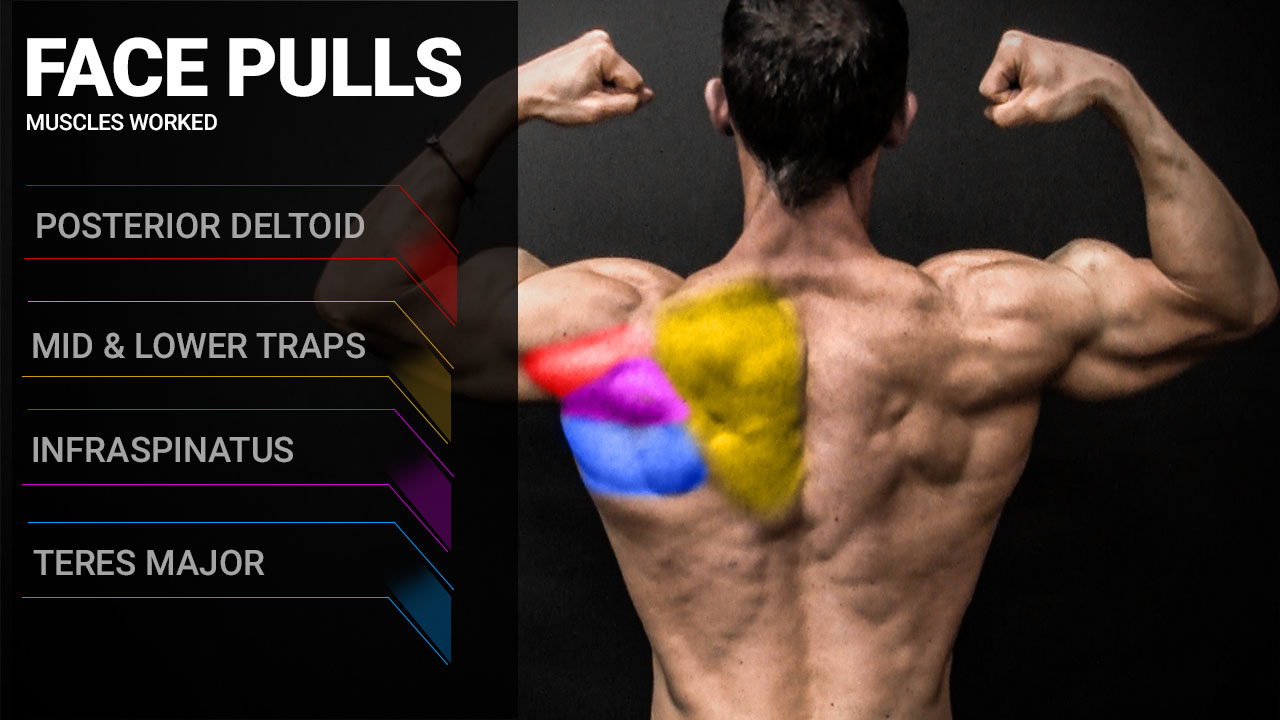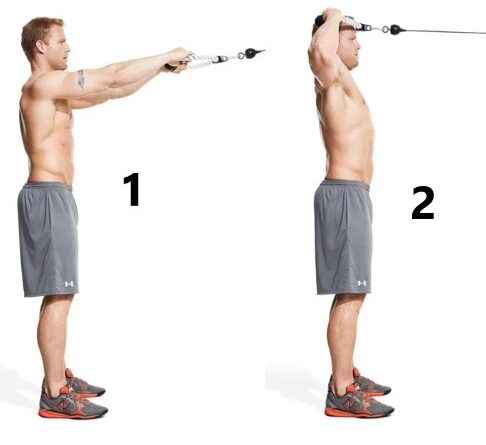What are face pulls?
Face pulls are a resistance exercise performed with a cable machine and typically a double rope attachment. The movement targets the upper back, including the rhomboids, traps, and posterior delts.
Face pulls are an ideal exercise to superset with other shoulder movements such as lateral raises or front raises where the focus is on form and intensity rather than weight.
What equipment can I use for face pulls?
The easiest way to perform face pulls is with a cable machine and a double rope attachment. It is possible to use other attachments, such as twin stirrups or even a straight bar with a wide grip, but the rope allows grip flexibility and a wider range of motion for the rear deltoids.
Most people prefer to stand while hitting face pulls with a slightly reclined stance but it is also an option to sit on a dumbbell bench or sit on the floor with feet pressed against the base of the machine for support.
The advantage of sitting is that removes any cheating of the movement from the hips as well as taking some of the trunk stabilising muscles out of the movement. This, in turn, allows you to focus on the target muscle connection.
If you do not have access to a cable machine, you can perform face pulls with resistance bands. Make sure that you have strong bands that are firmly attached to a base as you will be stretching them towards your face.
Which muscles are targeted by face pulls?
- Firstly, you will need to set up your cable. Attach a double rope and set the pulley at head height.
- Grip the rope with an overhand grip (an underhand grip can be used also, as we will discuss later)
- Take a step back. Set your feet at shoulder width, bend the knees slightly for stability, and straighten the back. Hold the rope out in front of you with straight arms.
- You are now in the starting position for the exercise.
- Take a deep breath, and upon exhaling, pull the ball ends of the rope towards your face, keeping your elbows flared outwards.
- As your hands move towards your face, split the rope so that each end goes on either side of your head.
- Make sure that your spine is kept straight and that your elbows are flared outwards at about 90 degrees from your side
- Once you have the rope ends at either side of your head, hold the position for two seconds and feel the muscles in your upper back and rear shoulders contract.
- Slowly return the rope to the starting position and bring your hands together.
- Repeat the movement for the required number of reps and sets.
Face pulls are not a mass-moving exercise that you will be chasing a 1-rep PB with. They are an accessory exercise for helping with the development of the delts and upper back for hypertrophy or assistance in performing heavy deadlifts or rows.
For this reason, select a light weight and focus on correct form and muscle connection. Use slow negative movements and for added intensity, superset with other shoulder exercises or shrugs.
Seated face pulls.
As previously mentioned, there are a few advantages to performing the face pull from a seated position. If you are going to be moving a heavy weight, having the stability of a solid bench and footplate will help you to stop the upper body swinging backwards and forwards from the hips.
The ideal machine for seated face pulls is a cable row machine. They already have a padded seat and solid footplate for standard rows. All you have to do is change the attachment to a double rope.

If you do not have a cable row station at your gym, you can perform face pulls at a standard cable machine with a dumbbell bench wheeled over or by sitting on the floor. If you are using a dumbbell bench, you will usually have to rest your feet on the floor, which does not give the best stability for this movement.
For this reason, most experienced lifters will sit on the floor with their feet supported against the bottom of the cable station.
If you perform this exercise from a seated position, it is a good idea to adjust the height of the pulley for each set. This allows you to activate the muscle from a slightly different angle each time and will make sure that you are breaking down more muscle fibres.
Resistance band face pulls.
Face pulls can be performed with resistance bands if you do not have access to a cable machine. Some people prefer to use lighter bands as a way of warming up the rear delts before going heavier on the cable machines, but, if you have a selection of bands, you can work your way through them and give your rear delts a great workout.

The movement is essentially the same as a cable face pull. Instead of using a cable pulley, you just need to attach a resistance band to an upright support at head height and pull away!
If you do not have anywhere to attach a band, you can perform it in the seated position with the band around your feet. This is really a last resort as it can easily lead to the cable slipping from your feet and hitting you in the face, so just take care and exhaust all other options first.
What are the face pulls alternatives?
Rear delt row
Lat rows
Rear delt fly
T bar row
Gymenix offers a selection of free training programs to suit all abilities and goals. Click on the links below for FREE access.




.png)



